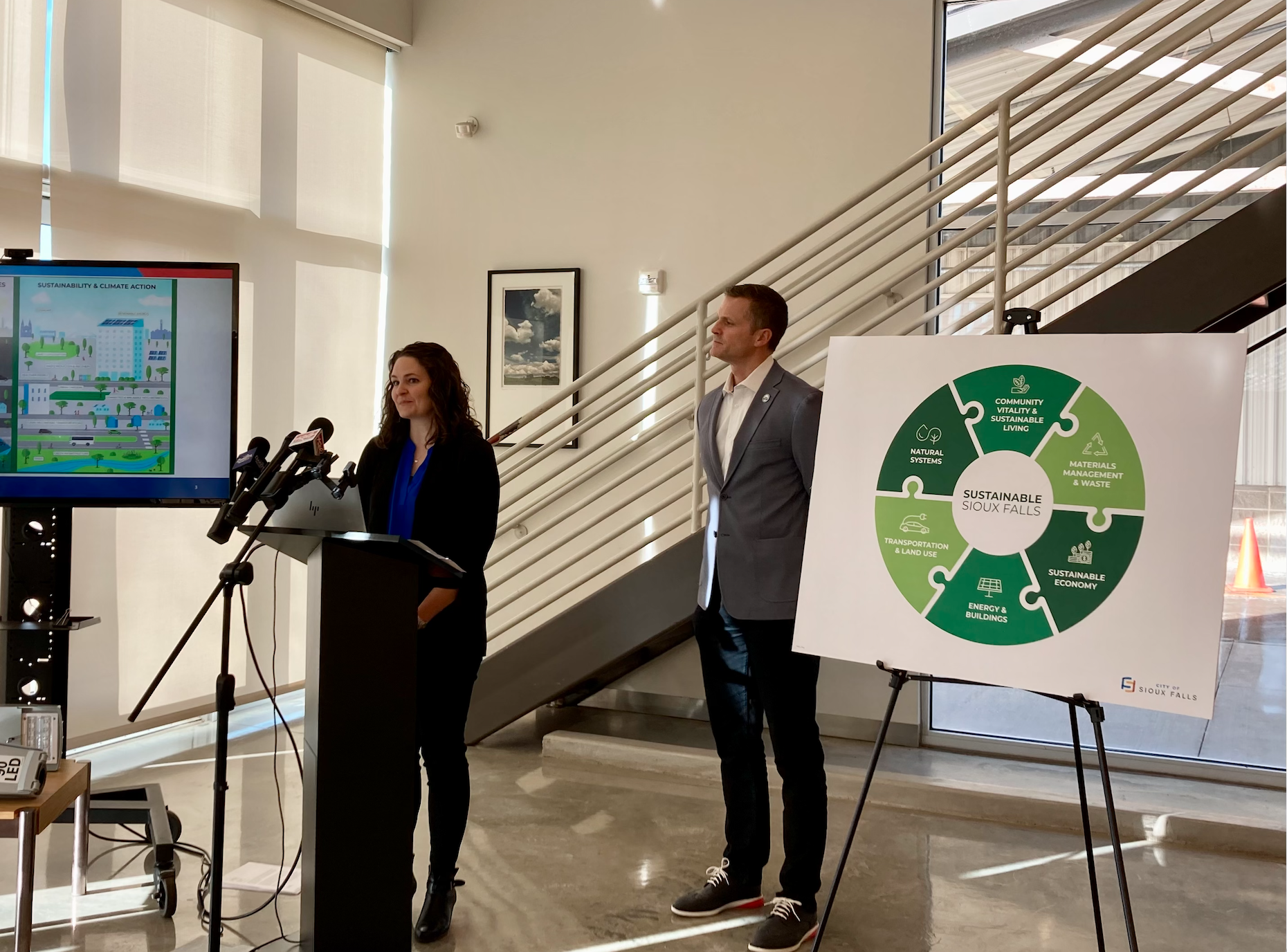Simplified: The City of Sioux Falls wants to reach net zero greenhouse gas emissions by 2050. It's all part of a 120-page Sustainability Climate Action Plan released this week.
Why it matters
- While Sioux Falls has had sustainability plans in the past, Mayor Paul TenHaken called this the first "real, comprehensive" plan for addressing sustainability and taking action to fight climate change. The city's Sustainability Director Holly Meier spent the last year and a half leading the effort to put this plan together.
- The two main goals of the plan are to 1) achieve net zero emissions by 2050 and 2) prioritize social equity, specifically because the negative affects of climate change tend to disproportionately affect what the plan calls "vulnerable populations" including people of color.
- This plan also sets up the city to lead by example in the hopes that private industry and other communities in the Midwest will follow suit, TenHaken added.
- TenHaken also acknowledged the obstacle of overcoming the local mindset that climate change is a "coastal" problem.
"Things are changing," TenHaken said. "And we need to realize that it's changing here in South Dakota as well."
What's in the plan?
So much. 120 pages, remember?
But, beyond the two underlying goals of net-zero emissions and prioritizing equity, there are six focus areas with more specific plans including ways the city can take action.
Here's a closer look at these six focus areas:
Energy and buildings
More than half – about 52 percent – of Sioux Falls' community emissions come from buildings.
- The goal here is to "decarbonize" buildings, i.e. shift buildings from running on gas to running on electricity or solar energy.
Transportation and land use
The second-largest cause of Sioux Falls' emissions comes from transportation.
- The plan calls for a zero-emissions city fleet by 2035, as well as encouraging people to drive less and rely more on public transit, bikes, etc. to get from place to place.
Natural systems
This is the section dedicated to taking care of the city's biodiversity, including protecting native prairies, taking care of trees and improving the quality of the Big Sioux River.
Materials management and waste
The plan also calls for a concerted effort to keep things out of the landfill. That includes promoting the use of sustainable products in favor of single-use items; promoting a more circular economy; and teaching people how to fix objects to encourage reuse and repair.
Community vitality and sustainable living
The plan also notes the link between local food production and sustainability, as well as the importance of equity in food access.
- Some of the action items here include growing the number of community gardens and increasing the number of people from low-income households participating in urban agriculture.
Sustainable economy
This part of the plan really drives home the role businesses can play in all of this. It talks about how businesses that prioritize sustainability will strengthen the local economy and benefit themselves as more and more consumers look to support sustainable businesses.
How is the city going to do all of this?
It's going to take a big, intentional effort between the city departments, the community, the City Council, businesses – basically everyone who lives here.
It'll also mean finding room in the budget for things like electric vehicles and energy-efficient buildings.
- The plan does outline specific, actionable steps both the city and community members can take to work towards these stated goals.
And, importantly, it'll mean tracking progress along the way and not waiting until 2050 to look back and see if the city has hit the mark.
What happens next?
The plan is still in draft stages. Between now and March 21, the public has a chance to read it and offer feedback.
The city will then take that feedback, adjust the plan as needed and present it to the City Council for full adoption later this spring.
You can read the entire plan here.


